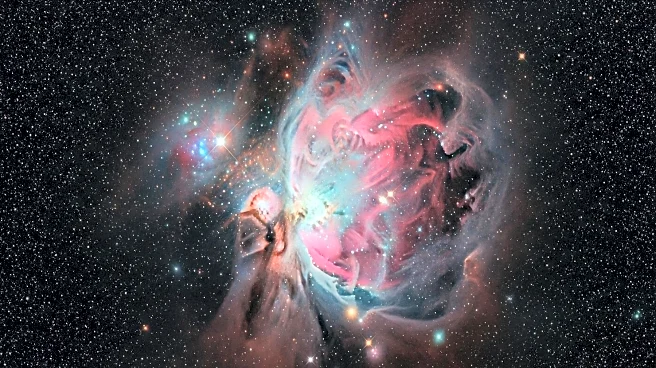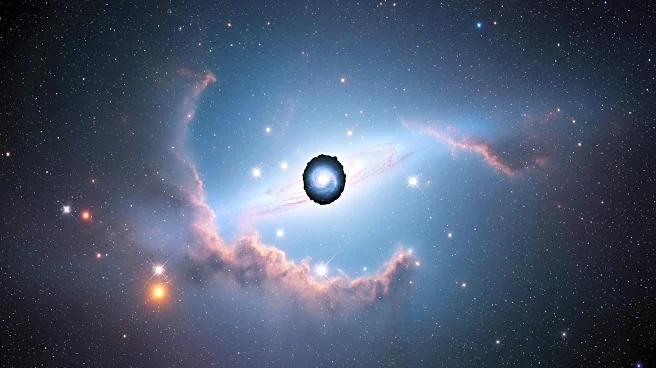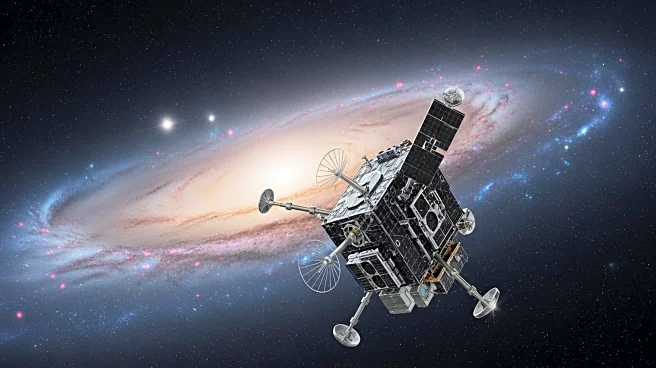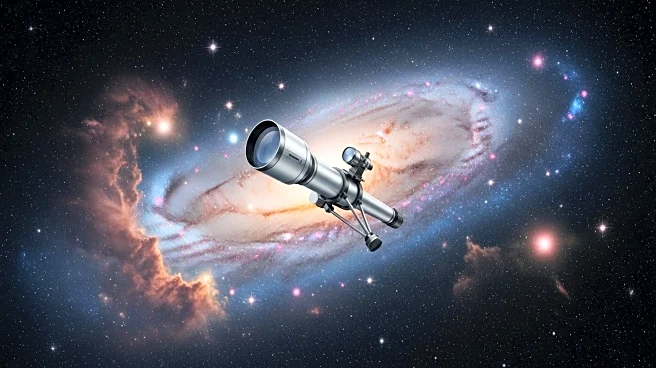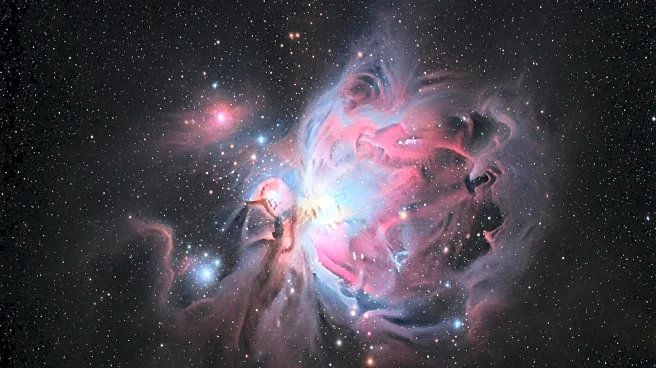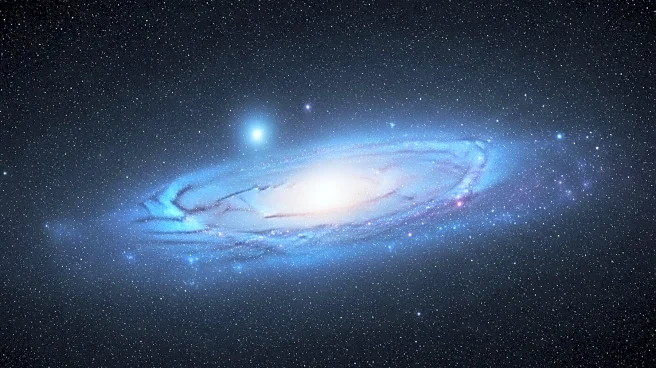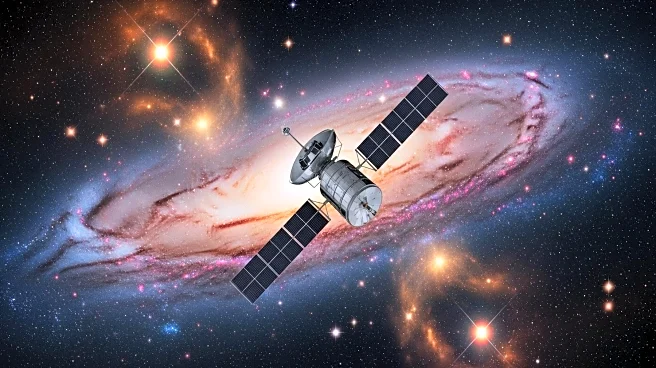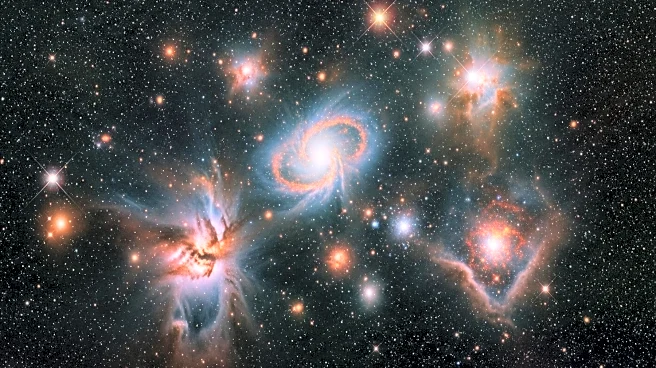What's Happening?
Astronomers have identified a rare 'runaway' dwarf galaxy, named dE01+09, which appears to have been ejected from its original galactic group billions of years ago. This discovery was made using a machine learning model that analyzed data from the Sloan Digital Sky Survey and the DESI Legacy Imaging Survey. The galaxy, now isolated, is located more than 3.9 million light-years from its nearest likely host, the NGC 524 group in the constellation Pisces. The study suggests that dE01+09 was expelled after a close gravitational encounter, a phenomenon more commonly observed in massive clusters rather than smaller group environments. The galaxy's radial velocity matches that of the NGC 524 group, indicating its past association. Spectroscopic analysis shows that dE01+09 stopped forming stars around 8.3 billion years ago, likely due to quenching within the group before its ejection.
Why It's Important?
The discovery of dE01+09 provides significant insights into the life cycles of dwarf galaxies and the dynamics of galactic groups. Understanding such ejections can help astronomers learn more about the history and evolution of galaxies, particularly those that appear isolated. This finding challenges the assumption that a galaxy's current location reflects its entire history, suggesting that some isolated galaxies may have experienced violent pasts. The study of dE01+09 could lead to a better understanding of how often such ejections occur and the conditions that lead to them, potentially altering current models of galaxy formation and interaction.
What's Next?
Researchers, led by Sanjaya Paudel, are now searching for more examples of runaway dwarf galaxies to further understand the frequency and conditions of such ejections. Future observations may reveal visible signs of dE01+09's past connections, such as faint tidal tails. These efforts could provide deeper insights into the mechanisms behind galactic ejections and the broader implications for galaxy evolution. The study of these phenomena may also inform the development of more accurate models of galactic dynamics and interactions.
Beyond the Headlines
The discovery of dE01+09 highlights the complex and often violent history of galaxies, challenging the notion that their current state is indicative of their past. This finding underscores the importance of advanced observational techniques and machine learning in uncovering hidden aspects of the universe. The study also raises questions about the fate of other isolated galaxies and the potential for discovering more such 'runaway' systems, which could reshape our understanding of the universe's structure and history.

